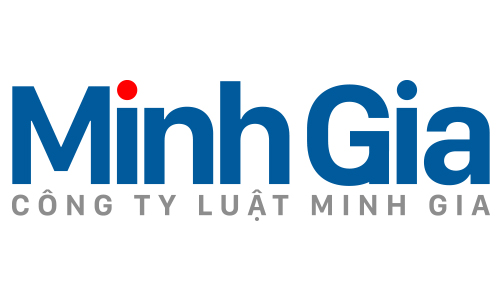Circular No. 31/2015/TT-BYT the regulations on allowances, times and personnel performing forensic examination and forensic psy
THE MINISTRY OF HEALTH
Circular No. 31/2015/TT-BYT dated October 14, 2015 of the Ministry of Health on the regulations on allowances, times and personnel performing forensic examination and forensic psychiatric assessment
Pursuant to the Government’s Decree No. 63/2012/ND-CP dated August 31, 2012 defining the functions, tasks, entitlements and organizational structure of the Ministry of Health;
Pursuant to the Government’s Decree No. 85/2013/ND-CP dated July 29, 2013 detailing measures to implement the Law on Judicial Expertise;
Pursuant to the Prime Minister’s Decree No. 01/2014/QD-TTg dated January 01, 2014 on allowances for judicial expertise;
At the request of General Director of Agency of Medical Services Administration
The Minister of Health promulgates the Circular regulating allowances, time and personnel performing forensic examination and forensic psychiatric assessment.
Article 1. Scope of adjustment
This Circular regulates application of allowances, time and personnel performing forensic examination and forensic psychiatric assessment as the basis for applying allowances for judicial expertise as prescribed in the Prime Minister’s Decision No. 01/2014/QD-TTg dated January 01, 2014 on allowances for judicial expertise (hereinafter referred to as Decision No. 01/2014/QD-TTg).
Article. Subject of application
1. Forensic examiners and forensic psychiatric assessors (hereinafter referred to as “examiners”) shall receive salaries from state budget for performing forensic examination and forensic psychiatric assessment as assigned by heads of the organizations solicited for performing forensic examination and forensic psychiatric assessment.
2. Forensic examiners’ assistants (including doctors, nurses, technicians, and healthcare assistants) shall receive salaries from state budget for participating in the process of forensic examination as assigned by heads of the organizations solicited for forensic examination (hereinafter referred to as “assistants”).
3. Ad hoc examiners shall receive salaries from state budget for participating in forensic examination at the invitation of heads of the organizations solicited for forensic examination.
Article 3. Allowances, number of personnel involved and time for performing forensic examination
1. Forensic examination
a) Allowances for forensic examination on a workday basis
Level of allowances, number of personnel involved and time for performing forensic examination on a workday basis are prescribed in Table 01 attached herewith.
b) Allowances for ad hoc forensic examination
Level of allowances, number of personnel involved and time for performing ad hoc forensic examination are prescribed in Table 02 attached herewith.
2. Forensic psychiatric assessment
Level of allowances, number of personnel involved and time for performing forensic psychiatric assessment on a workday basis are prescribed in Table 03 attached herewith.
3. Provisions on workdays
Provisions on workdays for forensic examination are prescribed in Clauses 3, 4, 5, Article 2, Decision No. 01/2014/QD-TTg.
Article 4. Implementation Effect
1. This Circular takes effect on December 01, 2015.
2. Allowances for forensic examination and forensic psychiatric assessment prescribed hereof shall be applied as of March 15, 2014.
Article 5. Implementation
1. Agency of Medical Services Administration shall preside over and cooperate with relevant agencies and units in organizing instructions and inspection of the implementation of this Circular across the country.
2. Agencies, organizations, and individuals in connection with the implementation of allowances for forensic examination and forensic psychiatric assessment shall be responsible for executing this Circular.
Any difficulties arising in the course of implementation of this Circular should be reported to the Ministry of Health for consideration and handling. /.
For the Minister
The Deputy Minister
Nguyen Viet Tien
Table 01
LEVEL OF ALLOWANCES, NUMBER OF PERSONNEL INVOLVED AND TIME FOR PERFORMING FORENSIC EXAMINATION ON A WORKDAY BASIS
(Attached with the Minister of Health’s Circular No.31/2015/TT-BYT dated October 14, 2015)
|
Types of forensic examination |
Number of personnel involved |
Workday (hours) |
Level of allowances/examiner/workday (VND) |
||
|
Examiners |
Assistants |
|
|
||
|
1. Examination of toxicity of inorganic and organic compounds |
|||||
|
a) Class A forensic sample |
02 |
02 |
16 |
500,000 |
|
|
b) Class B forensic sample |
02 |
02 |
300,000 |
||
|
c) Neither class A nor class B |
02 |
02 |
150,000 |
||
|
2. Examination of toxic volatiles, ethanol, drugs and other elements |
|||||
|
a) Class A forensic sample |
01 |
01 |
04 |
500,000 |
|
|
a) Class B forensic sample |
01 |
01 |
300,000 |
||
|
c) Neither class A nor class B |
01 |
01 |
150,000 |
||
|
3. Examination of pathologic histology |
|||||
|
a) Class A forensic sample |
02 |
02 |
20 |
500,000 |
|
|
a) Class B forensic sample |
02 |
02 |
300,000 |
||
|
c) Neither class A nor class B |
02 |
02 |
150,000 |
||
|
4. Examination of nuclear ADN/sample |
|||||
|
a) Class A forensic sample |
02 |
02 |
04 |
500,000 |
|
|
b) Class B forensic sample |
02 |
02 |
04 |
300,000 |
|
|
c) Neither class A nor class B |
02 |
02 |
|
150,000 |
|
|
5. Examination of mitochondrial DNA/sample |
|||||
|
a) Class A forensic sample |
02 |
02 |
06 |
500,000 |
|
|
b) Class B forensic sample |
02 |
02 |
300,000 |
||
|
c) Neither class A nor class B |
02 |
02 |
150,000 |
||
|
6. Examination of ADN of biological traces/sample |
|||||
|
a) Class A forensic sample |
02 |
02 |
04 |
500,000 |
|
|
b) Class B forensic sample |
02 |
02 |
300,000 |
||
|
c) Neither class A nor class B |
02 |
02 |
150,000 |
||
|
7. Examination of records for the first time |
02 |
02 |
32 |
150,000 |
|
|
8. Re-examination of records |
03 |
03 |
40 |
150,000 |
|
|
9. Second re-examination of records carried out by ministerial-level council |
|||||
|
a) Three-member council |
03 |
03 |
56 |
150,000 |
|
|
b) Five-member council |
05 |
03 |
150,000 |
||
|
b) Seven-member council (including medical consultation) |
07 |
03 |
150,000 |
||
|
10. Examination of objects that cause injuries |
02 |
02 |
24 |
150,000 |
|
|
11. Examination experiments |
02 |
02 |
16 |
150,000 |
|
|
|
|
|
|
|
|
Specific guides:
1. Class A forensic sample is the sample infected with HIV/AIDS carrying extremely dangerous infectious diseases that are capable of spreading very quickly and widely, causing high fatality or with unknown pathogens or the examination is required to be carried out in the area hit by extremely dangerous infectious diseases of class B as prescribed in Point a, Clause 1, Article 3 of the Law on prevention and treatment of infectious diseases or carried out in polluted environment.
2. Class B forensic sample is the sample carrying extremely dangerous infectious diseases that are capable of spreading very quickly and causing fatality or the examination is required to be carried out in the area hit by extremely dangerous infectious diseases of class B as prescribed in Point b, Clause 1, Article 3 of the Law on prevention and treatment of infectious diseases; or the examination requires exposure and contact with radioactive substances as prescribed by the Ministry of Science and Technology, hazardous chemicals as defined in the list of chemicals attached with the Government’s Decree No. 108/2008/ND-CP dated October 07, 2008 providing instructions on the implementation of a number of articles of the Law on Chemicals, the Government’s Decree No. 26/2011/ND-CP dated April 08, 2011 amending and supplementing a number of articles of Decree No. 108/2008/ND-CP (hereinafter referred to as Decree No. 108/2008/ND-CP and Decree No. 26/2011/ND-CP) according to law provisions.
3. Ad hoc examiners receive the same level of allowances received by examiners.
4. Assistants receive 70% of the level of allowances received by examiners.
Table 02
LEVEL OF ALLOWANCES, NUMBER OF PERSONNEL INVOLVED AND TIME FOR PERFORMING AD HOC FORENSIC EXAMINATION
(Attached with the Minister of Health’s Circular No.31/2015/TT-BYT dated October 14, 2015)
I. Examination on living people
|
Types of examination |
Number of personnel involved |
Level of allowances/examiner (VND) |
|
|
Examiners |
Assistants |
|
|
|
1. Examination for the first time |
|||
|
a) Sub-specialized examination |
02 |
02 |
160,000 |
|
b) General examination |
02 |
02 |
200,000 |
|
c) Class B subjects |
02 |
02 |
300,000 |
|
c) Class A subjects |
02 |
02 |
500,000 |
|
2. Re-examination |
|||
|
a) Sub-specialized examination |
03 |
02 |
160,000 |
|
b) General examination |
03 |
03 |
200,000 |
|
c) Class B subjects |
03 |
03 |
300,000 |
|
c) Class A subjects |
03 |
03 |
500,000 |
|
3. Second re-examination carried out by Class B council |
|||
|
a) Three-member council |
03 |
03 |
Depending on type of examination, level of allowances for re-examination shall be applied as prescribed in Section 2, Table 02. |
|
a) Five-member council |
05 |
03 |
|
|
a) Seven -member council |
07 |
03 |
|
|
4. Sub-specialized medical consultation carried out by experts from specialties (Clause 3, Article 2 hereof) |
|||
|
c) Examination subjects pertaining to classes A, B |
01-03 |
01 |
500,000 |
|
b) Examination subjects pertaining to neither class A or class B |
01-03 |
01 |
300,000 |
II. Re-examination of dead bodies
|
Types of examination |
Number of personnel involved |
Level of allowances/examiner/dead body (VND) |
|
|
Examiners |
Assistants |
|
|
|
1. Examination of dead bodies without being preserved as prescribed or in a natural state decomposition |
|||
|
1.1. In case non-autopsy |
|||
|
a) Dead bodies within 48 hours |
02 |
02 |
600,000 |
|
b) Dead bodies from 48 hours to seven days |
02 |
02 |
800,000 |
|
c) Dead bodies over seven days |
02 |
02 |
1,000,000 |
|
d) Dead bodies caused by infectious diseases of classes A, B |
02 |
02 |
1,000,000 |
|
1.2. In case of autopsy |
|||
|
a) Dead bodies within 48 hours |
02 |
02 |
1,500,000 |
|
b) Dead bodies from 48 hours to seven days |
02 |
02 |
2,500,000 |
|
c) Dead bodies over seven days |
02 |
02 |
3,000,000 |
|
c) Dead bodies over seven days and to be exhumed |
02 |
03 |
4,500,000 |
|
d) Dead bodies caused by infectious diseases of classes A, B |
02 |
02 |
4,500,000 |
|
2. Examination of dead bodies being preserved as prescribed |
|||
|
2.1. In case non-autopsy |
02 |
02 |
|
|
a) Dead bodies within 48 hours |
02 |
02 |
450,000 |
|
b) Dead bodies from 48 hours to seven days |
02 |
02 |
560,000 |
|
c) Dead bodies over seven days |
02 |
02 |
750,000 |
|
d) Dead bodies caused by infectious diseases of classes A, B |
02 |
02 |
750,000 |
|
2.2. In case of autopsy |
|||
|
a) Dead bodies within 48 hours |
02 |
02 |
1,250,000 |
|
b) Dead bodies from 48 hours to seven days |
02 |
02 |
1,875,000 |
|
c) Dead bodies over seven days |
02 |
02 |
2,250,000 |
|
d) Dead bodies caused by infectious diseases of classes A, B |
02 |
02 |
3,375,000 |
|
c) Dead bodies over seven days and to be exhumed |
02 |
03 |
3,375,000 |
III. Examination of human remains
|
Types of examination |
Number of personnel involved |
Level of allowances/examiner/set of remains (VND) |
|
|
Examiners |
Assistants |
|
|
|
General examination of human remains |
02 |
02 |
3,000,000 |
Specific guides:
1. Class A subjects mean the subjects infected with HIV/AIDS carrying extremely dangerous infectious diseases or the examination is required to be carried out in the area hit by extremely dangerous infectious diseases of class A or class B as prescribed in Point a or Point b, Clause 1, Article 3 of the Law on prevention and treatment of infectious diseases; or the examination requires exposure and contact with radioactive substances as prescribed by the Ministry of Science and Technology, hazardous chemicals as defined in the list of chemicals attached with the Government’s Decree No. 108/2008/ND-CP dated October 07, 2008 providing instructions on the implementation of a number of articles of the Law on Chemicals, the Government’s Decree No. 26/2011/ND-CP dated April 08, 2011 amending and supplementing a number of articles of Decree No. 108/2008/ND-CP.
2. Class B subjects mean the subjects infected with HIV/AIDS carrying dangerous infectious diseases that are capable of spreading quickly and causing fatality or the examination is required to be carried out in the area hit by dangerous infectious diseases of class B as prescribed in Point b, Clause 1, Article 3 of the Law on prevention and treatment of infectious diseases; or the examination requires exposure and contact with radioactive substances as prescribed by the Ministry of Science and Technology, hazardous chemicals as defined in the list of chemicals attached with the Government’s Decree No. 108/2008/ND-CP dated October 07, 2008 providing instructions on the implementation of a number of articles of the Law on Chemicals, the Government’s Decree No. 26/2011/ND-CP dated April 08, 2011 amending and supplementing a number of articles of Decree No. 108/2008/ND-CP, and other hazardous and dangerous substances according to law provisions.
3. Ad hoc examiners receive the same level of allowances received by examiners.
4. Assistants receive 70% of the level of allowances received by examiners.
Table 03
TYPES OF FORENSIC EXAMINATION, NUMBER OF PERSONNEL INVOLVED, TIME AND LEVEL OF ALLOWANCES FOR FORENSIC PSYCHIATRIC ASSESSMENT ON A WORKDAY BASIS
(Attached with the Minister of Health’s Circular No.31/2015/TT-BYT dated October 14, 2015)
I. Types of forensic examination, number of personnel involved and time for performing examination
|
Types of examination |
Number of examiners and assistants involved/case |
Examination time/examiner and assistant/case (hour) |
|||
|
Collection, study, compilation of records |
Medical examination |
Management, monitoring and care |
Examiners’ meetings |
||
|
A. Criminal cases |
|||||
|
1. In-patient examination |
|||||
|
a) Examiners |
From 3-5 persons (maximum of nine persons in special cases) |
56 |
3 hours/day x number of examination days (maximum of six weeks) |
0 |
12 |
|
b) Assistants |
02 |
08 |
0 |
6 hours/day x number of examination days (maximum of six weeks) |
02 |
|
2. Clinical examination |
|||||
|
a) Examiners |
03 - 05 |
32 |
04 |
0 |
01 |
|
b) Assistants |
01 |
0 |
0 |
04 |
0 |
|
3. On-site examination |
|||||
|
a) Examiners |
03 - 05 |
32 |
04 |
0 |
01 |
|
b) Assistants |
01 |
0 |
0 |
04 |
0 |
|
4. Examination of records |
|||||
|
a) Examiners |
03 - 05 |
64 |
0 |
0 |
04 |
|
b) Assistants |
01 |
08 |
0 |
0 |
0 |
|
B. Administrative and civil cases |
|||||
|
1. In-patient examination |
|||||
|
a) Examiners |
From 3-5 persons (maximum of nine persons in special cases) |
16 |
3 hours/day x number of examination days (maximum of six weeks) |
0 |
04 |
|
b) Assistants |
02 |
0 |
0 |
6 hours/day x number of examination days (maximum of six weeks) |
01 |
|
2. Clinical examination |
|||||
|
a) Examiners |
02 - 03 |
16 |
04 |
0 |
01 |
|
b) Assistants |
01 |
0 |
0 |
04 |
0 |
|
3. On-site examination |
|
||||
|
a) Examiners |
02 - 03 |
16 |
04 |
0 |
01 |
|
b) Assistants |
01 |
0 |
0 |
04 |
0 |
|
4. Examination of records |
|||||
|
a) Examiners |
02 - 03 |
16 |
0 |
0 |
04 |
|
b) Assistants |
01 |
04 |
0 |
0 |
0 |
II. Level of allowances for forensic psychiatric assessment on a workday basis
1. VND 500,000/workday/examiner shall be applied to examinations carried out on subjects catching one of the following diseases: HIV/AIDS, extremely dangerous infectious diseases or examinations required to be carried out in the area hit by extremely dangerous infectious diseases of class A as prescribed in Point a, Clause 3, Article 3 of the Law on prevention and treatment of infectious diseases or infectious diseases that are newly emerging or carrying unknown pathogens, and other dangerous diseases according to law provisions.
2. VND 300,000/workday/examiner shall be applied to examinations carried out on subjects carrying dangerous infectious diseases or examinations required to be carried out in the area hit by infectious diseases of class B as prescribed in Point b, Clause 1, Article 3 of the Law on prevention and treatment of infectious diseases or examinations required to be carried out in polluted environment.
3. VND 150,000/workday/examiner is applied to examinations carried out on uninfected subjects as prescribed in Clauses 1 or 2, this Section.
4. Ad hoc examiners receive the same level of allowances received by examiners.
5. Assistants receive 70% of the level of allowances received by examiners.







Liên hệ để được hỗ trợ nhanh nhất